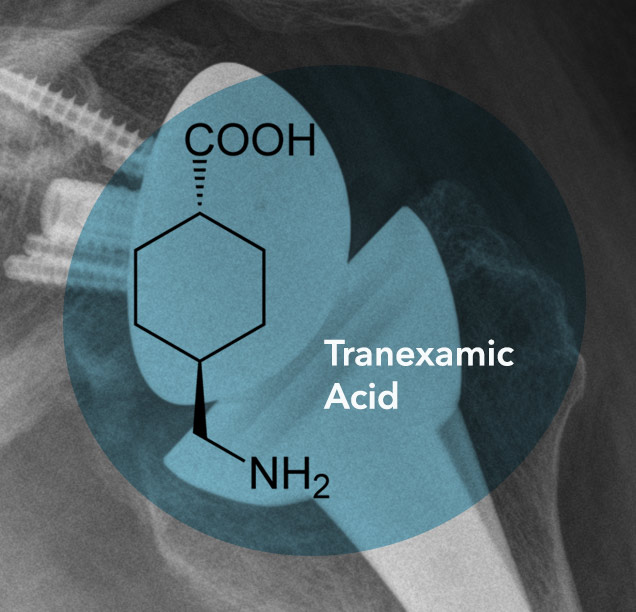Design
This is a randomised controlled study involving 150 patients divided into two groups: one that receives the treatment drug (TXA) and one that receives a placebo (Saline).
Study Procedure
All consecutive patients requiring shoulder replacement surgery who meet the inclusion and exclusion criteria will be considered eligible for this study. After having read the information sheet and signed the consent form, patients will then be randomized to one of 2 groups: treatment (TXA) or placebo (Saline). Baseline patient characteristics such as age, sex and hand dominance will be recorded on a deidentified patient chart along with pre-operative haemoglobin and haematocrit levels. At the start of surgery, patients will be administered either 2gm of TXA in 20ml solution or 20ml of Saline intravenously. After surgery, drain output, need for transfusion, length of time in recovery room and overall stay will be recorded as well as post-operative haemoglobin and haematocrit levels (for comparison) along with any complications eg haematoma or infection. The surgeon will also rate the operation in terms of complexity and visibility (the hypothesis being that TXA will reduce the former and improve the latter).
Statistical Procedure
Univariate and multivariate analyses will be used to determine the correlation between systemic administration of TXA and the selected outcome criteria. Subgroup analysis will be carried out between the different types of prosthesis (reverse versus anatomic). Any P value <0.5 will be considered statistically significant.
Ethics and Governance
Approved by St Vincent’s Hospital Human Research Ethics Committee to be undertaken at the Mater Hospital Sydney. HREC reference HREC/16/SVH/105.
Approved by North Shore Private Ethics Committee to be undertaken at North Shore Private Hospital. HREC reference NSPHEC 2016-LNR-003.
THERAPEUTIC GOODS ADMINISTRATION
TGA Clinical Trial Notification number CT-2016-CTN-03194-1 v2
AUSTRALIAN AND NEW ZEALAND CLINICAL TRIALS REGISTRY
ANZCTR trial number ACTRN1261600723482 viewable online here: https://www.anzctr.org.au/Trial/Registration/TrialReview.aspx?id=370797&isReview=true
Results
Patients who received TXA had a lower drain tube output at all time points: 41 mL vs. 133 mL at 6 hours, 75 mL vs. 179 mL at 12 hours, and 94 mL vs. 226 mL at 24 hours (P <.001 for all). They also had a higher postoperative hemoglobin (Hb) level (12.3 g/dL vs. 11.4 g/dL, P ¼.009), lower change in Hb level (1.7 g/dL vs. 2.3 g/dL, P ¼.011), lower total Hb loss (0.078 g vs. 0.103 g, P ¼.042), lower blood volume loss (0.55 L vs. 0.74 L, P ¼ .021), higher postoperative hematocrit level (36.7% vs. 34.6%, P ¼ .020), and lower hematocrit change (5.4% vs. 7.6%, P ¼.022). There was no significant difference in pain score or length of hospital stay, and no patients required a transfusion. We concluded therefore that a single dose of 2 g of intravenous TXA decreases blood loss and drain tube output in primary anatomic and reverse arthroplasty of the shoulder. No differences were detected in the occurrence of complications, need for transfusion, pain score, or length of hospital stay. With the mounting evidence now available, patients undergoing elective primary shoulder arthroplasty should be given intravenous TXA to decrease perioperative blood loss.



